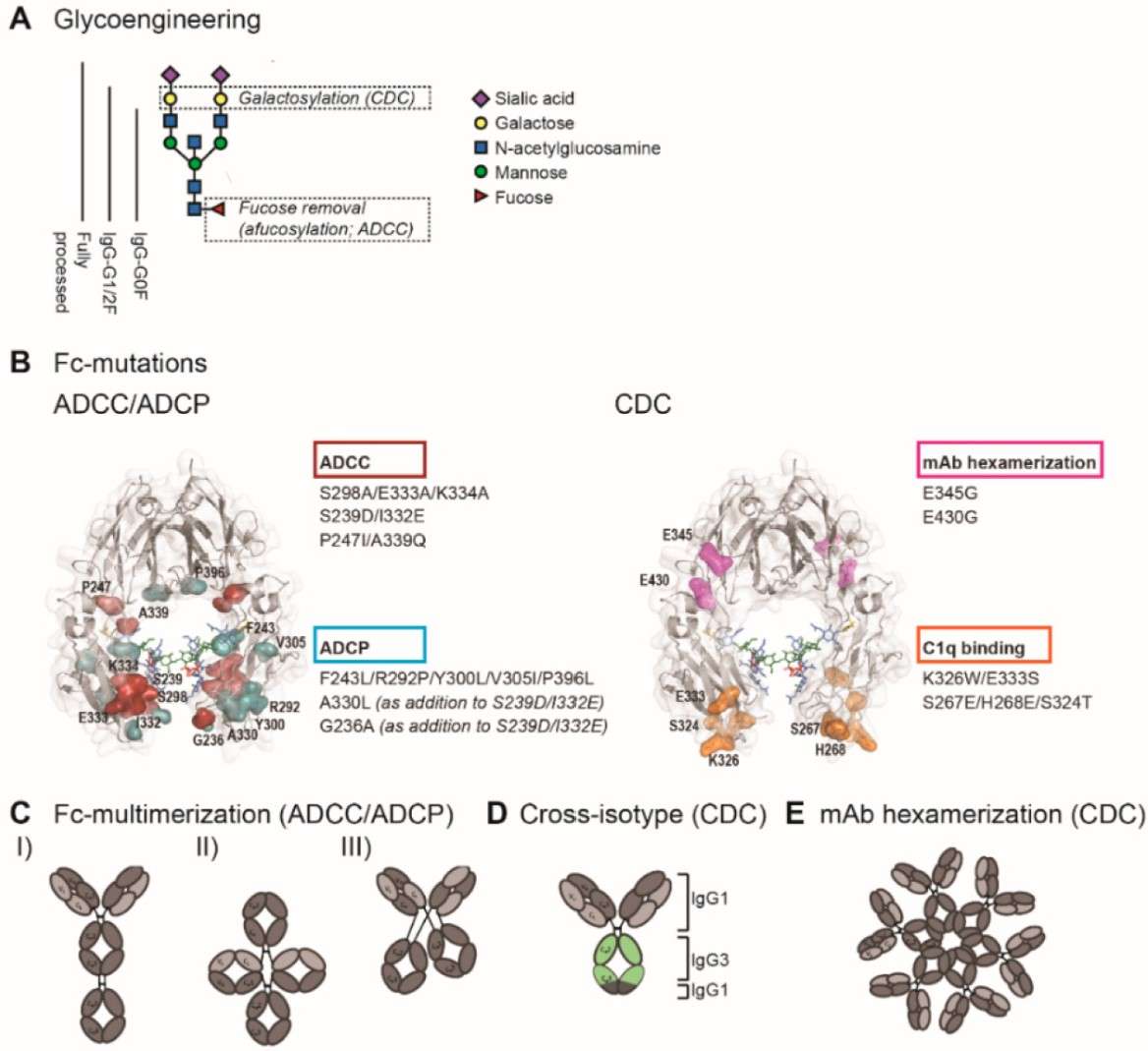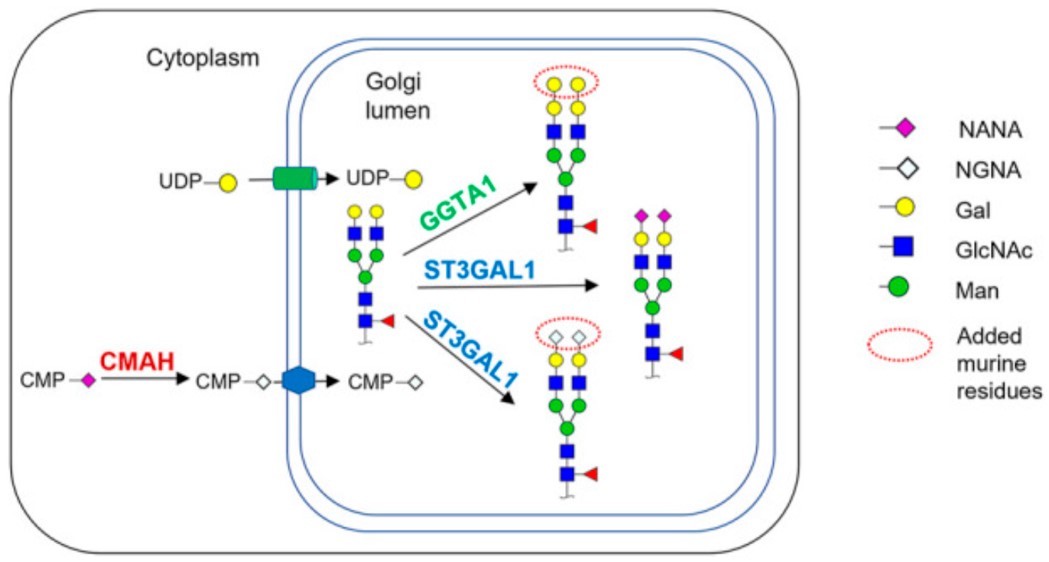Overexpression
Gene overexpression could be applied to test specific hypotheses and to identify the hypothesized targets. Based on the advanced gene overexpression technology, Creative Biolabs is providing gene overexpression services for our clients from all over the world, especially the clients who are currently having difficulty working on cell line glycoengineering.
Background of Gene Overexpression
Gene overexpression technique provides a powerful alternative tool to infer gene functions that remain to be discovered by gene knockout analysis or not yet possible creating targeted deletions. Novel biotherapeutic glycoproteins, like recombinant monoclonal antibodies (mAbs) are widely used for the treatment of numerous diseases. In glycoengineering, desired properties like the addition of sialic acid residues to a growing N-glycan chain, increasing triantennary structures, introducing non-fucosylated hybrid-type glycans, increased antibody effector function could be achieved by gene overexpression.
Application in Glycoengineering
Among different glycoprotein production systems, gene overexpression is widely used in the construction of engineered Chinese hamster ovary (CHO) cells. Overexpression of GalT produces an increase in the sialic acid content in CHO cells. For recombinant glycoprotein production, overexpression of CMP-sialic acid transporter (CMP-SAT) in CHO cells expressing recombinant human interferon gamma (IFN-γ) increased IFN-γ sialylation by 4-16%. Overexpression of N-sulfotransferase 2 (NDST2) and heparan sulfate 3-O-sulfotransferase 1 (3OST1) in CHO cells increase the amount of glycosaminoglycan (GAGs) secreted into the culture medium by 10 fold. Additionally, CHO cells overexpressing 30Kc19 gene not only increased rhEPO sialylation by 87.1% but also increased its yield by 102.6%. Bisecting GlcNAc glycoforms and increased antibody effector function could be achieved by the overexpression of β-1,4-GlcNAc transferase III (GnT III) and this technology has been used to produce the FDA approved anti-CD20 obinutuzumab. Triantennary structures were significantly increased by overexpression of GnT-IV or GnT-V individually in CHO cells. Co-overexpression of GnT III and α-mannosidase II (Man II) leads to further lower fucose content by introducing non-fucosylated hybrid-type glycans. Lastly, the altered glycan ratios can be overcome by overexpressing ST6Gal 1 in CHO cells.
 Fig.1 Strategies to enhance Fc-effector functions.1, 3
Fig.1 Strategies to enhance Fc-effector functions.1, 3
Numerous engineered E. coli strains have also been engineered. For instance, there is a non-pathogenic E. coli K12 strain that overexpresses recombinant sialyltransferases and sialic acid synthesis genes, which can convert an exogenous lactoside into polysialyl lactosides.
Features of our Overexpression Services
-
Effective overexpression vector for cell line glycoengineering
-
Complete project report
-
Perfect after-sale service system
-
Therapeutic glycosylated antibodies with a higher ADCC function
-
Cost-effective and time-saving
With our rich experience in offering gene overexpression services, scientists of Creative Biolabs are pleased to tailor the best-fit research program for your purpose. If you are considering using the gene overexpression for cell line glycoengineering, please do not hesitate to contact us for more details.
Published data
The glycan structure of monoclonal antibodies (mAbs) significantly affects efficacy, key antibody effector functions, stability, binding activity, and in vivo half-life. Gene overexpression is an effective strategy to modulate the glycan structure of mAbs. In this study, the researchers took advantage of the inherent advantages of CHO cells and engineered a CHO cell to produce murine-like glycosylation. They overexpressed N-acetyllactosaminide α-1,3-galactosyltransferase and cytidine monophospho-N-acetylneuraminic acid hydroxylase. Analysis of the glycan profiles showed that the mAbs produced by the modified CHO cells matched the glycosylation profile and functions of the antibodies in mice. This study demonstrates the feasibility of modifying CHO cells to express mAbs with mouse glycans and provides a model for designing our glycosylation process.
 Fig.2 Related sections of the modified N-glycosylation pathway.2, 3
Fig.2 Related sections of the modified N-glycosylation pathway.2, 3
FAQs
Q1: What cell lines have overexpression been used to modify?
A1: Overexpression is an effective strategy for genetic glycoengineering and is used to modify animals, plants, insects, yeast, bacteria, etc., to express proteins with desired glycosylation patterns. Each cell line has various advantages and limitations.
Q2: How to realize gene overexpression in cell lines?
A2: Recent advances in gene editing tools, especially the clustered regularly interspaced short palindromic repeats/CRISPR-associated protein (CRISPR/Cas) system, have made genetic glycoengineering faster and more effective. CRISPR/Cas is a powerful gene editing tool with high targeting accuracy and short experimental cycle time and is widely used to overexpress genes to precisely regulate glycosylation patterns.
Customer Review
Suitable Gene Overexpression Processing
"As a startup focused on the production of glycoproteins, we had great difficulty with glycosylation. Working with Creative Biolabs was a nice twist. They used advanced gene editing technology to achieve customization of glycan structures through gene overexpression. This not only accelerated our R&D process but also ensured that our products were up to standard. They truly deliver on their commitment to client focus."
Through Precise Gene Overexpression
"Creative Biolabs' services customized to our research needs were impressive. With their expertise and quick response, they regulated the glycosylation pathway through gene overexpression and succeeded in enhancing the biological activity of the glycoproteins. This was a transformative experience for us in therapeutic glycoprotein research."
References
-
van der Horst, Hilma J., et al. "Fc-engineered antibodies with enhanced Fc-effector function for the treatment of B-cell malignancies." Cancers 12.10 (2020): 3041.
-
Gupta, Shivani, et al. "Engineering protein glycosylation in CHO cells to be highly similar to murine host cells." Frontiers in Bioengineering and Biotechnology 11 (2023): 182.
-
Distributed under Open Access license CC BY 4.0, without modification.
For Research Use Only.
Related Services

 Fig.1 Strategies to enhance Fc-effector functions.1, 3
Fig.1 Strategies to enhance Fc-effector functions.1, 3
 Fig.2 Related sections of the modified N-glycosylation pathway.2, 3
Fig.2 Related sections of the modified N-glycosylation pathway.2, 3



